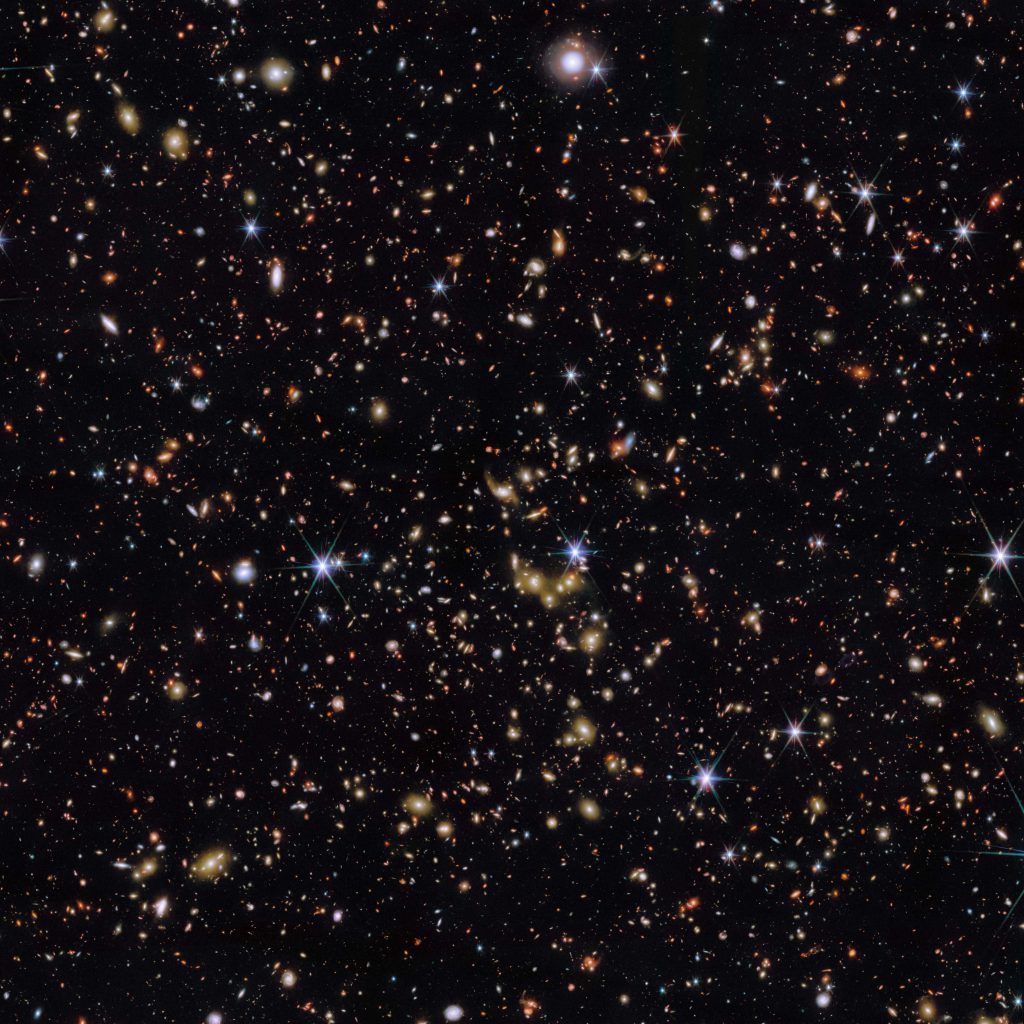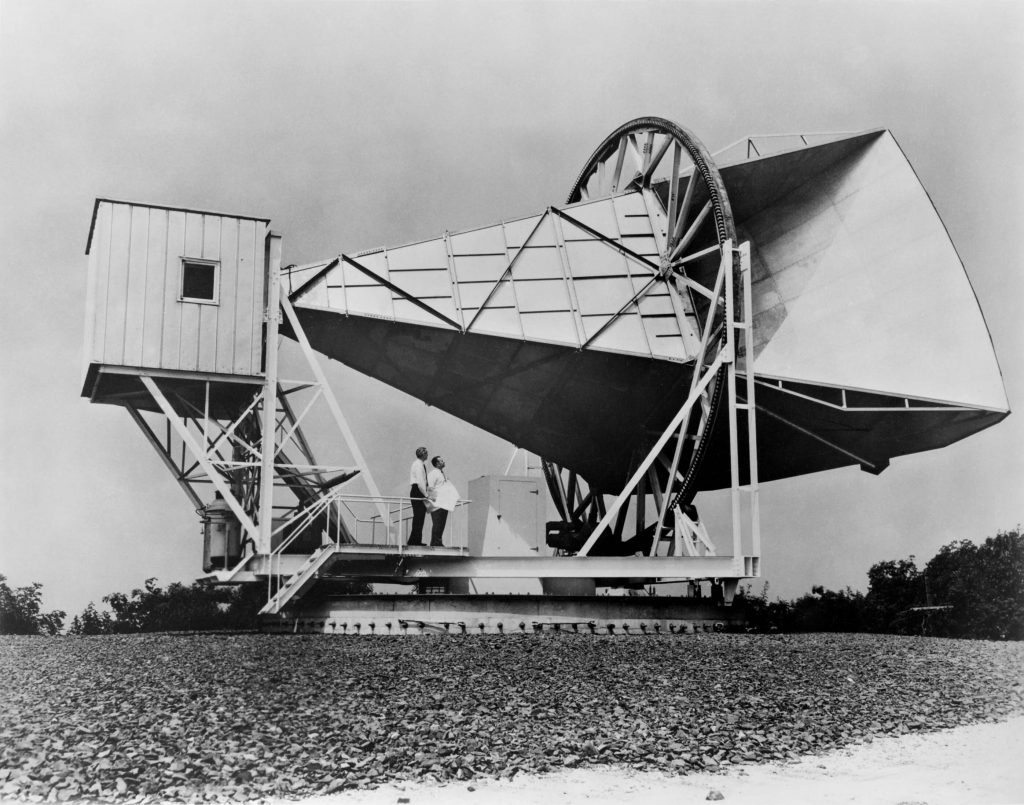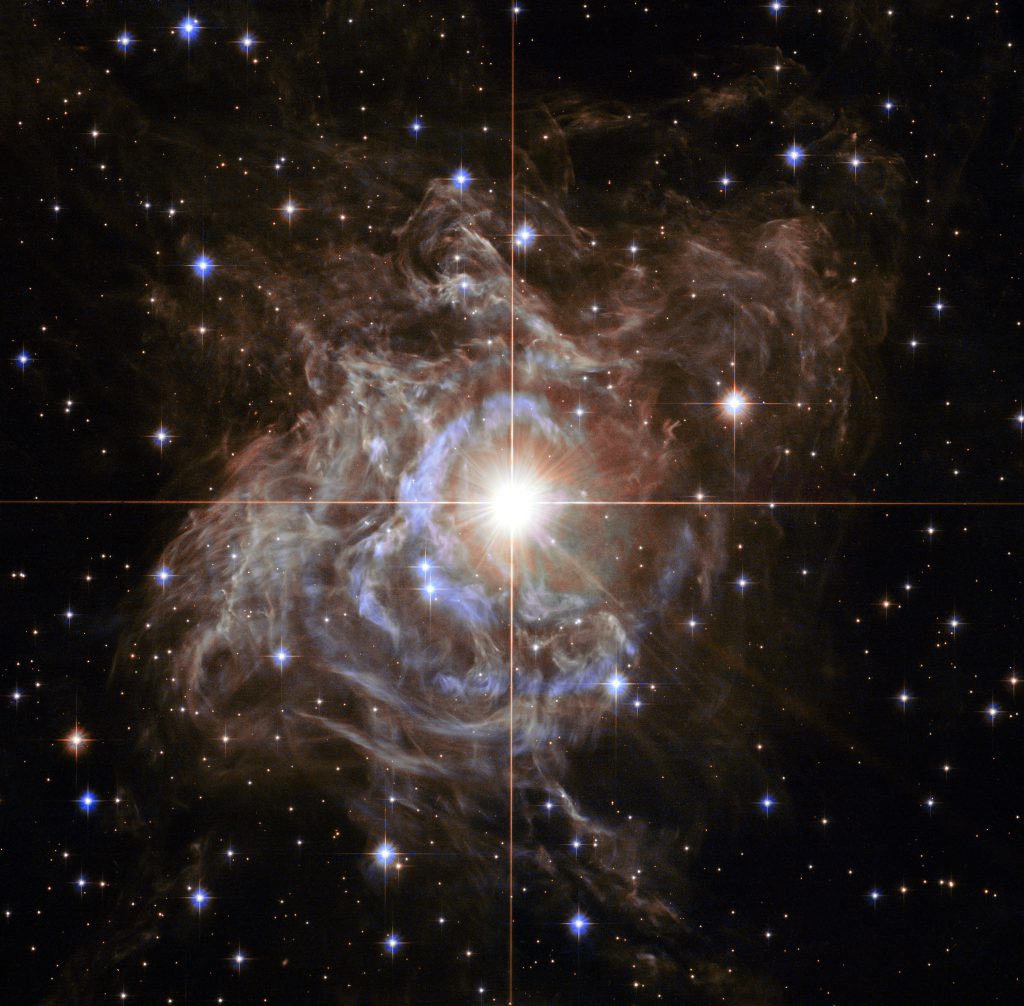Can it help us understand the unknown universe?

One day in the spring of 1543, a canon named Nicolaus Copernicus, lying on his sickbed, suddenly awoke from a coma that he had been put under because of a brain stroke. Resting beside him was the first copy of his magnum opus: De revolutionibus orbium coelestium (On the Revolutions of the Heavenly Spheres). Copernicus had finally relented to having his work published under pressure from his pupil, Georg Rheticus.
Years of deliberation and fear of ensuing controversy had led to this moment. Until then, most people, particularly religious institutions like the church, believed that the Earth was the centre of the universe, and that the heavenly bodies revolved around our planet. This was called the geocentric model. Anyone with ideas contrary to this would have been considered a heretic.
But Copernicus argued in his work that Earth’s place in the cosmos was not special – it was not the centre of the universe. Although Copernicus would not be alive to witness it – legend says that he died soon after he laid eyes on his lifetime’s achievement – his work would send shockwaves throughout the scientific community, upending one of the most concretely believed systems of the medieval times. This marked the beginning of what was termed “the Copernican Revolution.”
The Copernican model was the first step towards our understanding of the universe. Copernicus had placed the sun at the centre of the universe. Centuries later, a galactocentric model took shape, which placed the centre of the universe at the centre of the Milky Way. “Initially, people were even thinking that our galaxy is the entire universe,” says Chethan Krishnan, Professor at the Centre for High Energy Physics (CHEP), IISc.
“Then it happened that, in 1924, Edwin Hubble was the first person who used a very powerful telescope – powerful in comparison to its peers then – to calculate the distance to a nebulous object that we could see, now called the Andromeda galaxy,” adds Abhijeet Singh, PhD student at CHEP, IISc. “He proved that it was so far away that it could not be within the Milky Way galaxy. It had to be a separate galaxy, not some cloud within our own.”
Over the last century, our ability to peer into the cosmos has grown exponentially. Telescopes around the world and across space have captured billions of images and signals over mind-boggling distances. The huge amount of data about the universe that we have gathered has also led to a humbling realisation: What we know so far is still miniscule compared to what we don’t know about the universe. How can we then observe and predict patterns about the universe with the limited data that we have? How do we build models that can help explain unknown processes and entities in the universe?
What we know so far is still miniscule compared to what we don’t know about the universe
These questions have stumped cosmologists for a very long time. The answers, some have found, lie in coming up with certain theoretical assumptions.
“[For example], given the fact that we know very little about the distribution of matter in the universe, let us make the assumption that it is uniformly distributed throughout,” Chethan explains.
This assumption, known as the cosmological principle, is the idea that, on scales larger than 250 million light-years in distance, the universe “looks the same whoever and wherever you are,” as Scottish astronomer Andrew Liddle once described it. A spectator on Earth will find the universe to be just as vast and saturated with celestial bodies as another viewer looking up from a galaxy a few billion light-years away.
“The cosmological principle is the symmetry principle that we assume governs our universe at large scales, inferred from what we observe,” says Ranjini Mondol, PhD student at CHEP, IISc.
What this means is that scientists assume that the universe displays symmetry (or uniformity) in at least two properties: homogeneity and isotropy. Homogeneity means that any large enough slice of the universe has similar properties – like density and number of galaxies – as every other slice. Isotropy, on the other hand, refers to similar properties in all directions from a particular slice. For example, glass is isotropic because it has similar properties like strength, texture and brittleness in all directions, whereas an anisotropic material could have, say, different values of electrical conductivity along x, y and z directions.
“Suppose the universe is not isotropic, this means that it is preferring a specific direction over others, or maybe a few directions over others. But what is the mechanism that makes the universe pick those directions?” asks Abhijeet. Explaining these preferences might become too complicated, which is why scientists have assumed that the universe doesn’t pick any specific direction. With the cosmological principle in place, the universe thus went from being galactocentric to acentric, or having no identified centre.
Assuming homogeneity and isotropy allows us to extrapolate data from the observable universe to the unseen universe, making the modelling of the cosmos much, much easier. Along with that, since the universe does not hold any location to be special, we can conclude that the science we come up with is unbiased, and not different for different locations. The principle also allows us to ignore complex details like the structures of galaxies, and gives us a better overview of the objects that are being studied.
“The cosmological principle is quite like the Copernican idea in some way, which is basically that we are not in a special place in the universe; at least spatially, we are not,” observes Chethan. “Almost everything that we know about the universe is built on the cosmological principle.”
Cosmic confirmation

One of the reasons why the cosmological principle came about was because physicists, as they often do, wanted to simplify the mathematical analysis used to study the universe. This had to be done because a major part of the universe was, quite literally, in the dark. The principle helped scientists extrapolate data taken from the observable universe and generalise it to the greater, unseen cosmos. But surprisingly, with more data coming in from telescopes and spectroscopic instruments, scientists realised that a lot of the analysis they made based on the principle held true. “As telescopes became more and more powerful, for a long time, there was nothing that went against [the Cosmological Principle],” notes Abhijeet. “People were surprised that this simple assumption could explain such complicated data sets.”
One such dataset is the Cosmic Microwave Background (CMB) radiation.
In 1964, Arno Penzias and Robert Wilson, physicists at the Bell Laboratory in the USA, were tinkering with a hypersensitive 15-foot-long horn antenna to employ it as a telescope in measuring radio signals from outer space. It was critical that all possible ground signals that could interfere with such radio signals be eliminated. However, even after taking stringent precautions, when they pointed the antenna towards outer space, they recorded a mysterious background noise in the data collected – like static coming from an FM radio. It seemed to be coming from all directions in empty space – spots with no seen stars or galaxies. The soon-to-be Nobel laureates even tried scrubbing pigeon droppings from the antenna, thinking it would reduce the background noise, but to no avail.
A short distance away, American astronomer Robert Dicke and his colleagues at Princeton University were preparing to search for microwave radiation that they theorised must be a remnant of the Big Bang – the explosion that created the universe. Now that Penzias and Wilson were at a standstill, they started searching for theoretical explanations, and contacted Dicke. After the phone call, Dicke famously proclaimed to his colleagues: “Boys, we’ve been scooped.” He realised that the noise happened to be exactly what they were looking for.
This relic radiation, known as the Cosmic Microwave Background (CMB) radiation, is the universe’s own background glow, an echo of its creation. It can’t be “seen” using a standard telescope, but a sufficiently powerful radio telescope can pick up a faint glow in the form of an electromagnetic wave of millimeter wavelength. The most intriguing part, however, is that the temperature of this radiation is found to be the same, around 2.75 Kelvin or -270.4 ℃, wherever it is detected.
“The fact that the CMB has the same temperature in any direction in the sky is actually a very strong piece of evidence for the cosmological principle,” Chethan posits. Of course, the value might deviate very slightly from 2.75 Kelvin, but these subtle variations are very hard to detect. “It is not an easy task to make any object, say a ball of glass, which is as uniform as the CMB is. We would have to use very sophisticated technology to be able to do that,” remarks Abhijeet.
The fact that CMB radiation has the same temperature in any direction in the sky is actually a very strong piece of evidence for the cosmological principle’
“Our assumptions on isotropy and homogeneity match with data on CMB at a very, very good level of precision,” Ranjini says. “This makes CMB a smoking gun signature that, at least in the very early universe, our universe was homogeneous and isotropic.”
Assuming the cosmological principle to be true, scientists have concluded through certain observations that 70% of the universe is made up of dark energy. This has allowed cosmologists to create a model of the universe, called the Lambda CDM model – the most widely accepted model as of today. Simply put, the model posits – based on certain theories and maths calculations – that our universe began with the Big Bang and expanded outward, carrying both visible and dark matter, and dark energy.
“As more data kept coming in, it was just validating this standard model, which relies on the cosmological principle,” Chethan says.
But the Lambda CDM model is just one possible explanation for why the universe is the way it is. “So, whenever you come up with any model of the universe which is not based on the cosmological principle, it has to explain everything that this principle has so far successfully explained. That becomes a huge challenge to take on,” Abhijeet mentions.
Some bold scientists have decided to take on this challenge, especially because we have now collected enough data about the cosmos to question the universal validity of the cosmological principle. One such weapon in their arsenal has turned out to be the Hubble constant.
Constant tension

In 1929, astronomer Edwin Hubble, peering through the 100-inch Hooker telescope – then the world’s largest – made an astonishing observation: extraterrestrial bodies like stars and planets were fleeing away from us, and the further they were, the faster they fled. Of special interest were stars known as the Cepheid variables. The brightness of these stars varies sinusoidally, similar to alternating currents (AC) – it repeatedly oscillates between a maximum and minimum value. The time period of this variation in brightness is related to the stars’ actual luminosity. Astronomer Henrietta Leavitt was able to predict how far away from Earth these stars were by noting how dim they were as viewed from Earth in comparison to their luminosity. Hubble, along with fellow astronomer Milton Humason, established a mathematical relationship between the distance to these stars and the velocity with which they were travelling away from Earth. This speed was found to be Hubble constant times their distance from Earth. Thus, the Hubble constant tells us the rate at which the universe expands.
There are multiple ways of measuring the Hubble constant. The standard model of our universe which assumes the cosmological principle to be true, along with the help of CMB, calculates the present-day value of the constant to be 67.4 kilometres per second per megaparsec (1 megaparsec is about 3.26 million light-years). However, modern technology has allowed us to precisely measure the actual recession speed of galaxies and their distance from Earth, leading to a Hubble constant value of around 72-73 km/s/Mpc.
The first method calculates the constant from the early universe – using CMB and the cosmological principle. The second method uses late universe celestial bodies – galaxies and supernovae close to Earth – to calculate the value of the Hubble constant. Some cosmologists now believe that perhaps the discrepancy means that the universe may not be as homogeneous and isotropic as previously thought.
Critics of the principle argue that the reason why the standard model has come up with such a different value for the Hubble constant is that it relies too much on the cosmological principle. “Some people say that this means that the cosmological principle is not valid once you try to measure the rate of flying apart of things very, very precisely,” Abhijeet mentions.
The discrepancy between the Hubble constant values has led to differences in estimates of the universe’s age, and also has some scientists questioning our understanding of dark matter and energy. They even suggest that something fundamental needs to be revised about this accepted idea that began with the Copernican Revolution centuries ago.
“These little hints about the fact that the Hubble constant as measured from the nearby universe and also from the early universe, seeming to be in tension, is kind of interesting. I hope that it is actually a real problem … because then it is a hint about some new thing,” Chethan opines.
Abhijeet concurs. “This space [cosmological principle] has to be watched very, very carefully. If it actually turns out not to be true – once we do very fine measurements and put it to serious scrutiny – that would be a very exciting time for physics, and a lot of work would have to be done.”
Devansh Jhawar is a first year BSc (Research) student at IISc, and a science writing intern at the Office of Communications
(Edited by Ranjini Raghunath)




